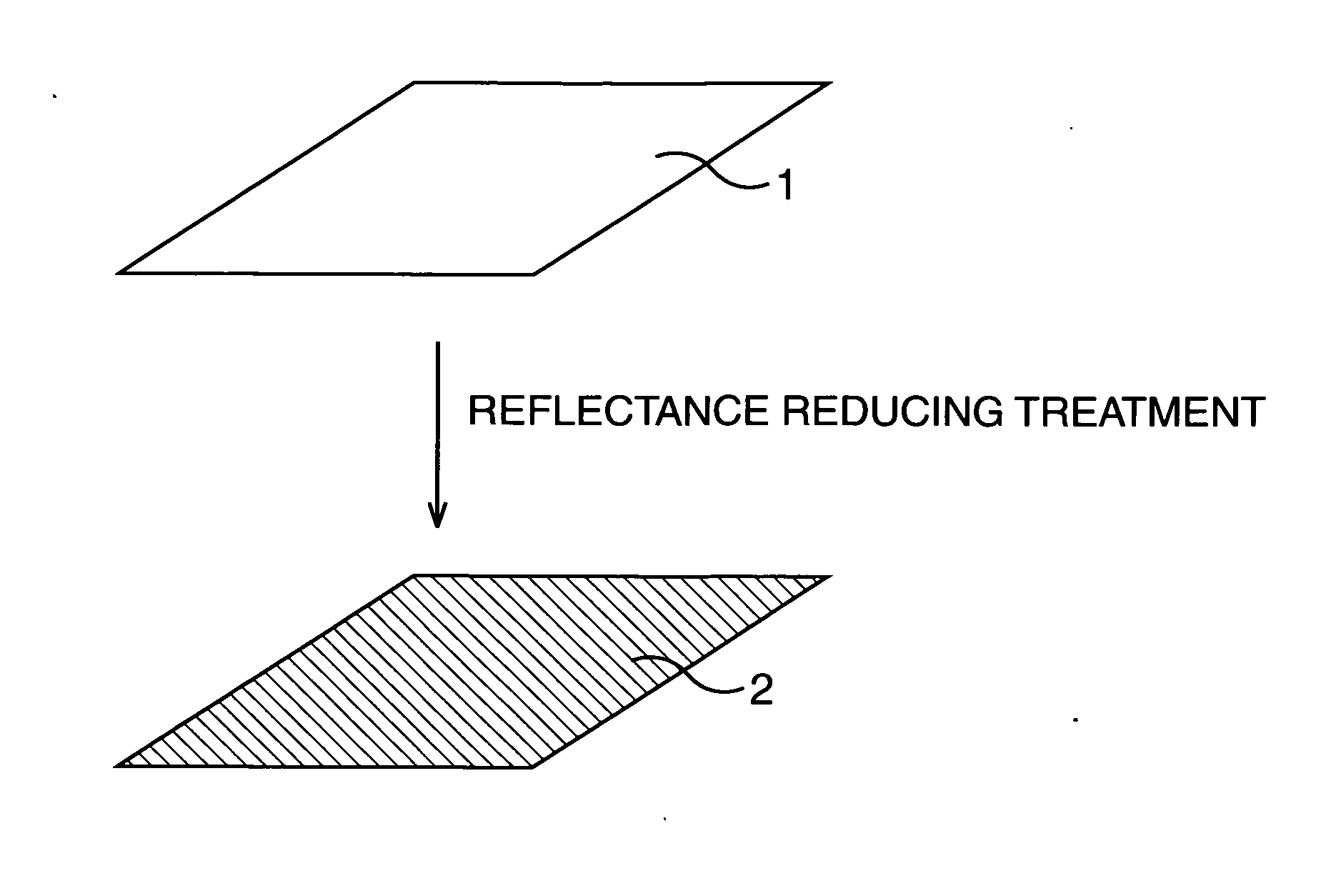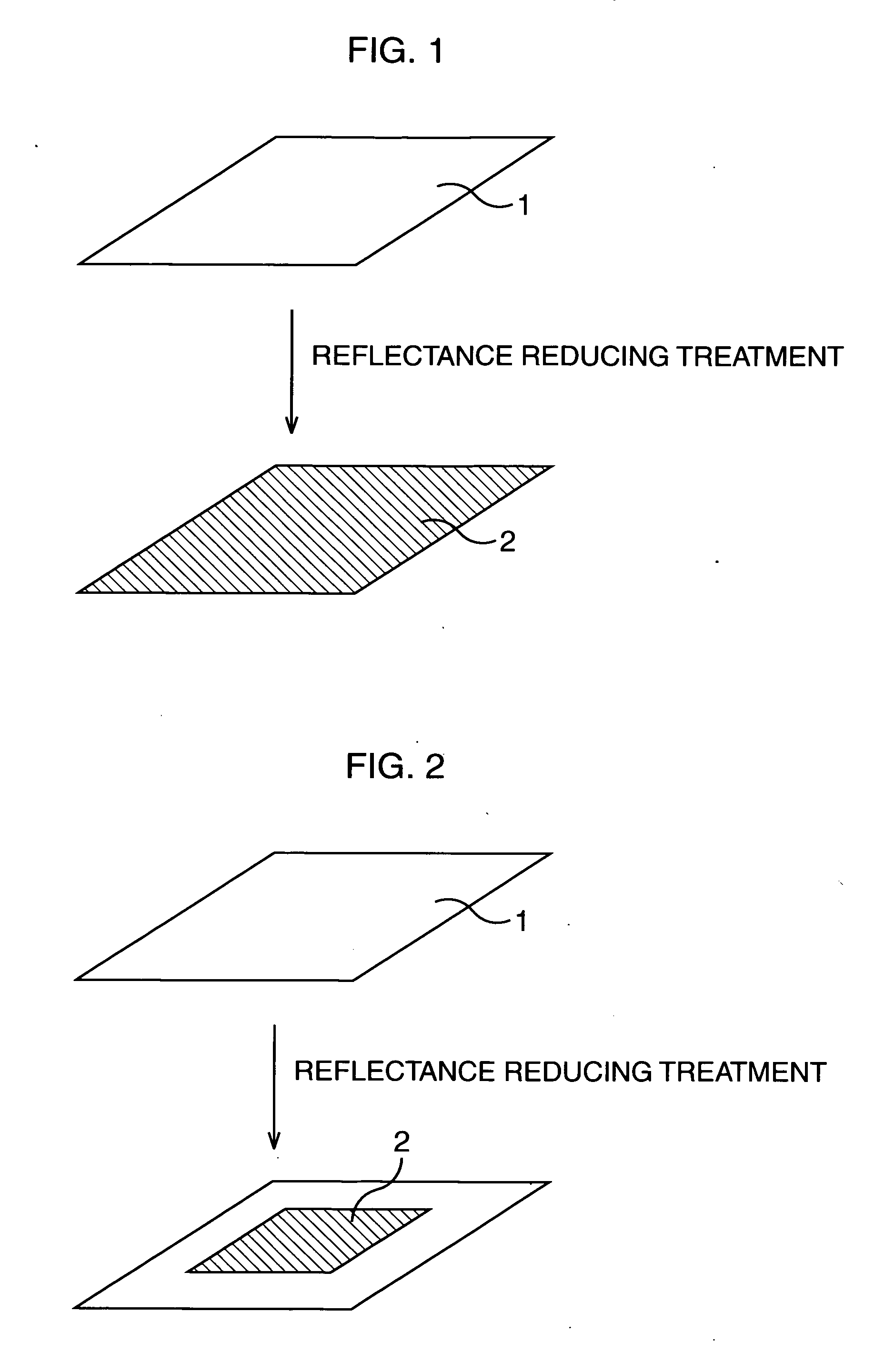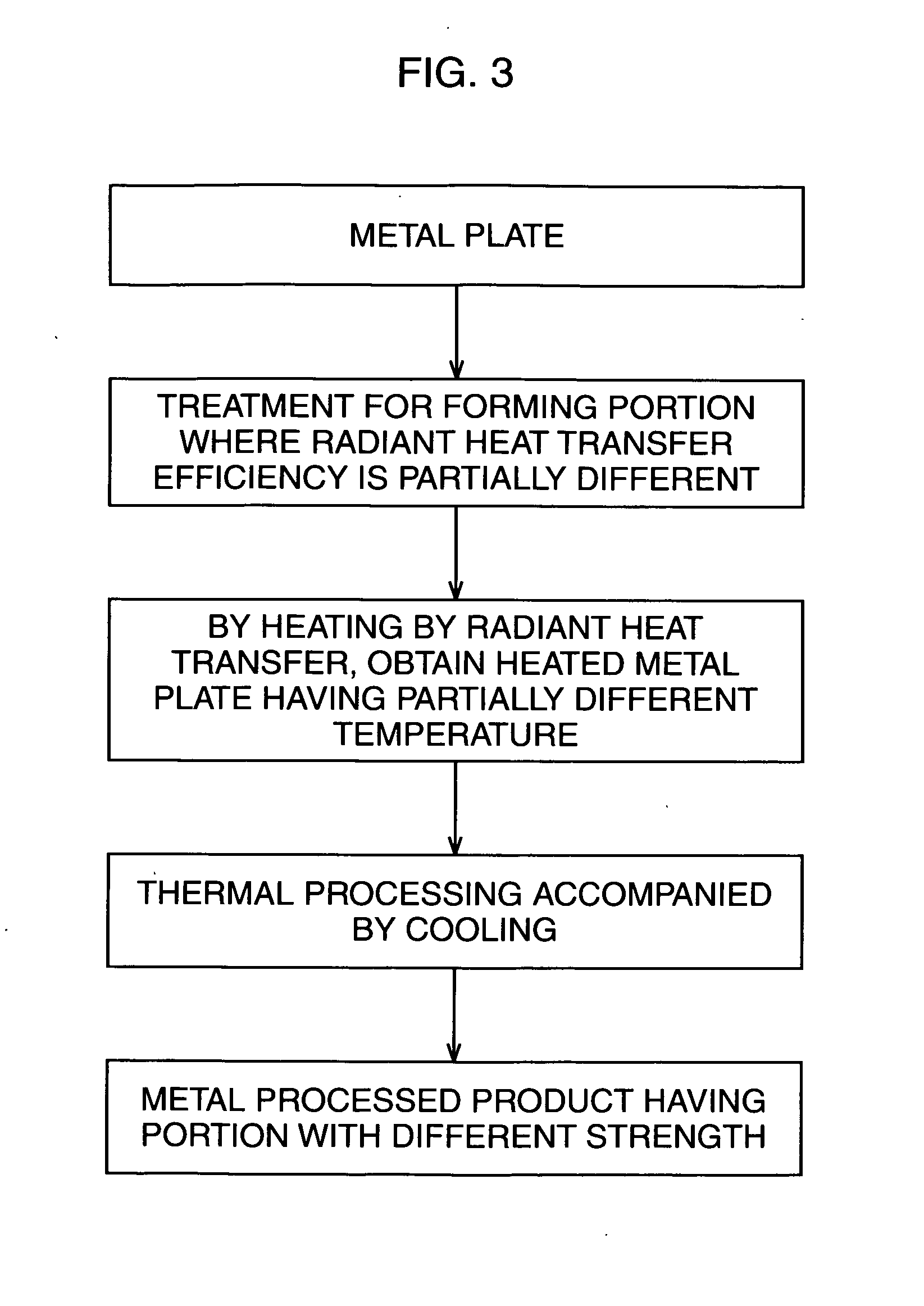Metal plate to be heated by radiant heat transfer and method of manufacturing the same, and metal processed product having portion with different strength and method of manufacturing the same
a technology of metal processing and heat transfer, which is applied in the direction of domestic heating, solid-state devices, drying solid materials, etc., can solve the problems of poor productivity of gas heating furnaces or the like, inability to stabilize, and likely to spring back, so as to improve heating efficiency and reduce cost. , the effect of intensively heating only a specific portion of a metal pla
- Summary
- Abstract
- Description
- Claims
- Application Information
AI Technical Summary
Benefits of technology
Problems solved by technology
Method used
Image
Examples
example 1
[0060]Table 1 summarizes effects obtained when the reflectance reducing treatment according to the present invention was applied to a metal plate. A steel plate with a 1.6 mm plate thickness was cut into a shape with a 170 mm short side and a 440 mm long side and was heated by radiant heat transfer from 20° C. to 850° C. by using a near-infrared lamp. A heating rate was found from a ratio between a temperature difference from 20° C. to 850° C. and the time required for heating. No. 1 to 10 are examples and No. 11 and others are comparative examples.
TABLE 1kind ofreflectanceheatingreducingconcrete treatmentreflectancerateNo.metal platetreatmentcontents(%)(° C. / sec)1hot-dippaintingapply aqueous solution1340galvanizingcontaining carbonblack subjected tohydrophilic treatment(Aqua-Black of TokaiCarbon)2hot-dipmetal coatingblack electroless13.538galvanizingby platingnickel plating3hot-diprougheningshot blast4023galvanizing(Ra = 0.8 μm)4hot-dippaintingapply13.937galvanizingpolyester / melami...
example 2
[0063]A hot-dip galvanized steel plate having a composition containing C, 0.22 mass %, Si: 0.15 mass %, Mn: 2.0 mass %, P: 0.02 mass % or less, S: 0.005 mass % or less, Ti: 0.023 mass %, Al: 0.035 mass %, B: 15 ppm, and N: 50 ppm or less, with the balance being Fe and inevitable impurities and having a 1.6 mm plate thickness was cut into the shape shown in FIG. 4. It has the size of a 100 mm short side, a 170 mm long side, and a 440 mm height. Next, 0.6 g / m2 blackening in which a 10% nickel chloride hexahydrate aqueous solution was applied, followed by water-washing and drying was applied to a center portion 12 of the hot-dip galvanized steel plate, thereby forming a portion having reduced reflectance and increased radiant heat transfer efficiency. A peripheral edge portion 13 was not subjected to the blackening.
[0064]Next, the hot-dip galvanized steel plate having undergone the blackening was heated by a near-infrared heating apparatus so that the center portion 12 was quickly heat...
example 3
[0067]A hot-dip galvanized steel plate having the same composition as that of the hot-dip galvanized steel plate used in the example 2 and having a 1.6 mm plate thickness was cut into the shape shown in FIG. 6. It had the size of a 100 mm short side, a 170 mm long side, and a 440 mm height. Next, a center portion 15 and a peripheral portion 16 of the cut hot-dip galvanized steel plate were subjected to blackening in which a 10% nickel chloride hexahydrate aqueous solution was applied, followed by water-washing and drying. At this time, the center portion 15 was subjected to 0.6 g / m2 blackening, and the peripheral portion 16 was subjected to 0.3 / m2 blackening, thereby forming portions where the reflectance was decreased and radiant heat transfer efficiency was increased as in the shape shown in FIG. 6. A peripheral edge portion 17 was not subjected to the blackening.
[0068]Next, the hot-dip galvanized steel plate having undergone the blackening was heated by a near-infrared heating ap...
PUM
| Property | Measurement | Unit |
|---|---|---|
| reflectance | aaaaa | aaaaa |
| reflectance | aaaaa | aaaaa |
| reflectance | aaaaa | aaaaa |
Abstract
Description
Claims
Application Information
 Login to View More
Login to View More - R&D
- Intellectual Property
- Life Sciences
- Materials
- Tech Scout
- Unparalleled Data Quality
- Higher Quality Content
- 60% Fewer Hallucinations
Browse by: Latest US Patents, China's latest patents, Technical Efficacy Thesaurus, Application Domain, Technology Topic, Popular Technical Reports.
© 2025 PatSnap. All rights reserved.Legal|Privacy policy|Modern Slavery Act Transparency Statement|Sitemap|About US| Contact US: help@patsnap.com



